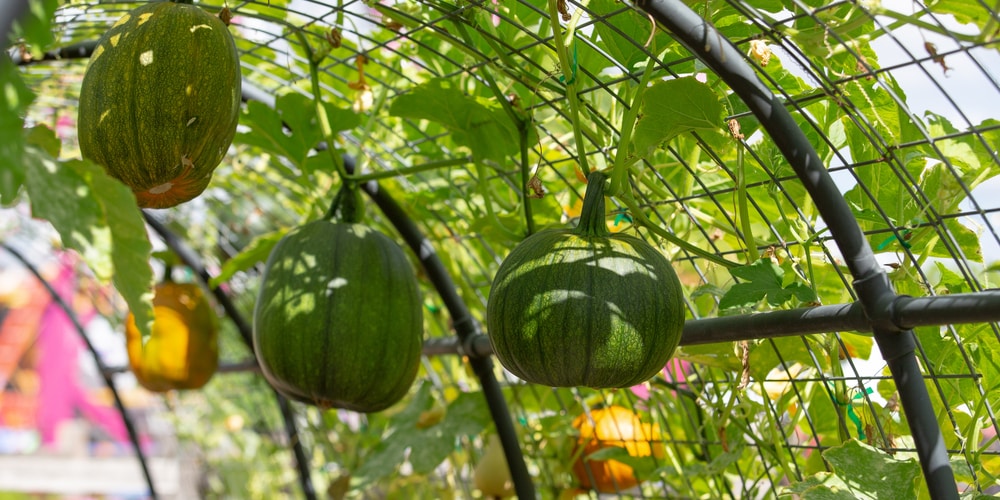Squash plants are known for producing big and heavy fruit, and those who are limited in garden space may think of growing it vertically. However, you may ask, ‘does squash need a trellis?’
Here’s a short guide on how to grow squash on a trellis, and the benefits you can gain from doing so.
Should You Trellis Squash?
The short answer to whether you should trellis squash plants or not depends entirely on you. Generally, squash is a vining plant that can grow on its own without needing vertical support. However, in this kind of vegetable garden setup squash can quickly take over the patch and become unruly.
Also, it’s worth noting that squash takes up plenty of space with its vines, let alone the fruits that will eventually form. Vertical growing allows you to get more plants in the same amount of space, and a few other advantages as well compared to a traditional planting layout.
How to Grow Squash on a Trellis
The first thing you’ll need to know when growing squash plants on a trellis is that it’s not a good climber. Therefore, you will need to teach it to climb along (which shouldn’t be too hard to do).
It’s recommended that you pick a vining squash variety to enjoy greater success. If possible, opt for smaller fruits as the bigger variants can grow long and heavy vines, and this can be too much for most home garden setups.
When growing squash on a trellis, you can choose from several support types. You can check the seed packet or plant tag to see the maximum height, then pick the corresponding support for it. For larger fruits, you can get a pergola, a-frame, or arbor, while smaller varieties can make do with a DIY squash arch, a lean-to, and also an a-frame.
Step 1. Do the Weave and Tuck Technique
Most squash vines prefer to stay on the ground rather than climb, but you can help it along by ‘weaving’ the vines onto the support. Locate the ends and carefully tuck them in and around the wires.
Step 2. Tie the Vines to the Support
Simply doing the weave technique may not be enough to make the squash vines attach themselves to the trellis. In this case, you will want to add ties such as twist ties and plant clips to affix them in place. Alternatively, you can use twine or flexible tie wires in a pinch.
As a word of warning, you shouldn’t make the tie too tight, or else the vines will get strangled as it grows. Once the tendrils have a solid hold on the vertical trellis then you can remove the ties or clips and work on the new growth.
Step 3. Care and Grow as Normal
Once your squash trellis setup is complete you can resume care as necessary. Water as needed and provide plenty of sunshine, and in time the plant will start to produce fruits. You can also introduce companion plants to inhibit pests and diseases.
Advantages of Growing Squash on a Trellis
Better Use of Space
Growing squash vertically solves a common problem with squash gardeners. These plants tend to eat up a lot of space, and those who have a small yard or garden will find themselves quickly overwhelmed.
Getting squash up allows you to get more plants and more fruit in the process. There’s an initial investment but the costs tend to pay for themselves in greater yields.
Hygienic Reasons
Perhaps the biggest advantage of growing squash on a trellis is that the elevation tends to be more beneficial for the plant. Leaves won’t get splashed on as much, and there’s a reduced risk when it comes to disease and fungal infections. More importantly, the fruits are a few feet off the ground and won’t become easy targets for small animals, bugs, and pests.
Better Fruit Quality
Last but not least, growing squash on trellises equals better fruit quality overall. Since the plant is more hygienic there won’t be any yellow spots on the fruit or brown spots on the leaves since they won’t get wet when you’re watering. Aside from a pleasing aesthetic appearance you can also enjoy and admire your squash as it grows.


